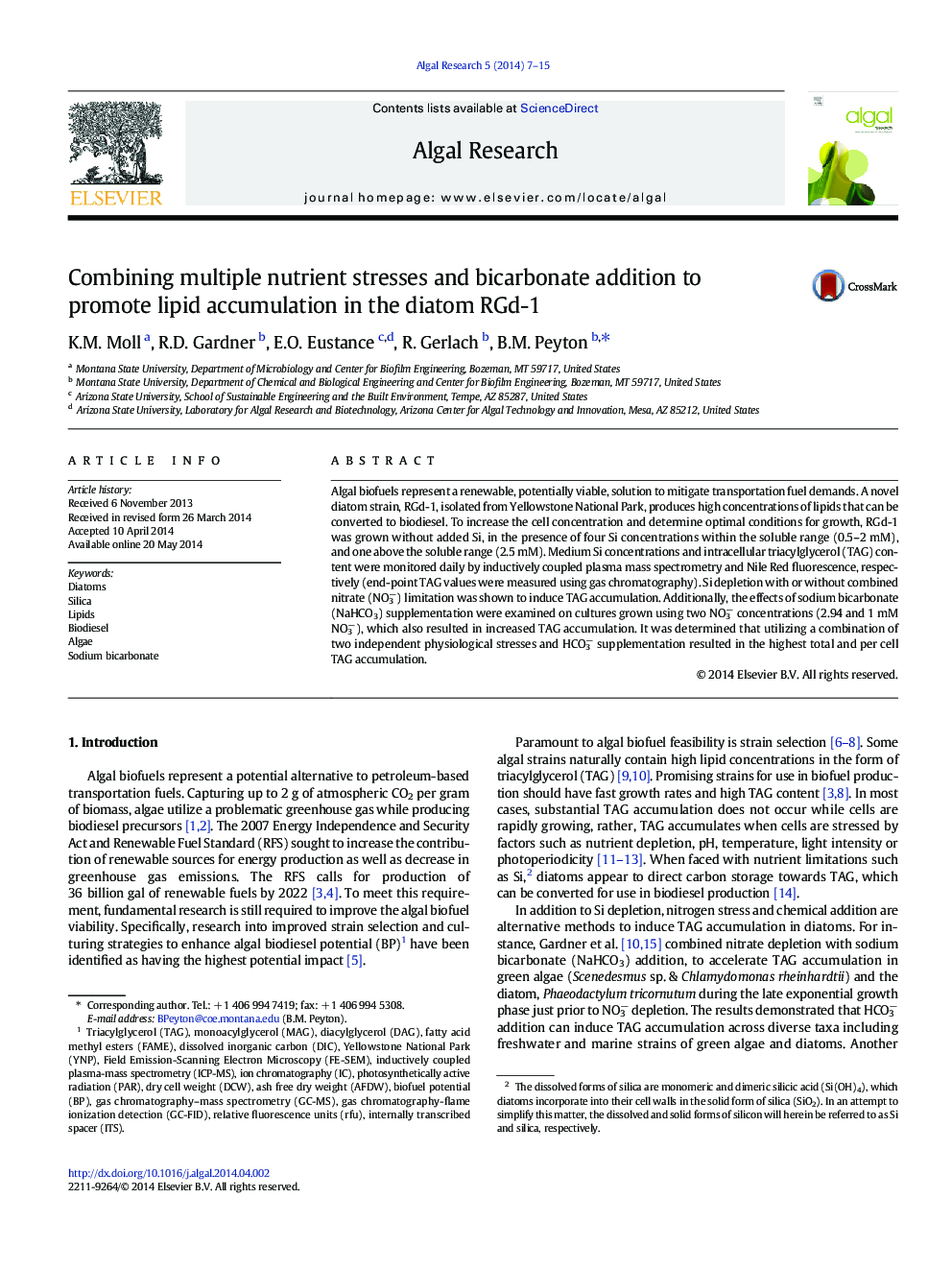| Article ID | Journal | Published Year | Pages | File Type |
|---|---|---|---|---|
| 1742077 | Algal Research | 2014 | 9 Pages |
•RGd-1 cell concentration and lipid yields increased with silica concentration.•2 mM Si was the best Si concentration for RGd-1 growth and lipid accumulation.•Si & NO3− limitation combined with 25 mM HCO3− produced the highest lipid content.
Algal biofuels represent a renewable, potentially viable, solution to mitigate transportation fuel demands. A novel diatom strain, RGd-1, isolated from Yellowstone National Park, produces high concentrations of lipids that can be converted to biodiesel. To increase the cell concentration and determine optimal conditions for growth, RGd-1 was grown without added Si, in the presence of four Si concentrations within the soluble range (0.5–2 mM), and one above the soluble range (2.5 mM). Medium Si concentrations and intracellular triacylglycerol (TAG) content were monitored daily by inductively coupled plasma mass spectrometry and Nile Red fluorescence, respectively (end-point TAG values were measured using gas chromatography). Si depletion with or without combined nitrate (NO3−) limitation was shown to induce TAG accumulation. Additionally, the effects of sodium bicarbonate (NaHCO3) supplementation were examined on cultures grown using two NO3− concentrations (2.94 and 1 mM NO3−), which also resulted in increased TAG accumulation. It was determined that utilizing a combination of two independent physiological stresses and HCO3− supplementation resulted in the highest total and per cell TAG accumulation.
